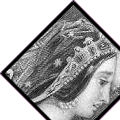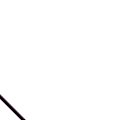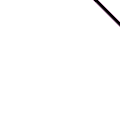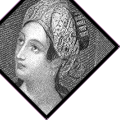





1) Focusing on Dickinson: The site poses questions throughout, explicitly and implicitly, about how Dickinson represents ecstasy and the east. In addition, readers might want to read more widely in Dickinson's oevre. Other sites in the Classroom Electric that focus on Dickinson offer ready access to relevant works. Sites that focus on Whitman and also those that address questions of sexuality and passion may broaden our understanding of Dickinson, ecstasy, and the east. Click here to go to the table of contents and options for searching the Classroom Electric.
2) Orientalism in the United States: The site notes the popularity of orientalist tropes in the nineteenth century. Although orientalism may have been more visibly popular among British writers, including Byron and Thomas Moore, U.S. writers were interested in the east also. The site notes briefly that such wrters as Whitman, Melville, Whittier, Emerson, and others read eastern works, were interested in eastern religions, history, and philosophy, and made references to the east in their own works. Orientalism in the U.S. has not earned extensive study. But with the explosion of electronic resources, it is becoming easier to trace interest in the east in the U.S. in the nineteenth century. To do this, in addition to perusing print texts by canonical writers, one might want to search the databases of U.S. nineteenth-century journals made available by Cornell University and the University of Michigan as part of "The Making of America" project. For example, a search for Lalla Rookh at http://www.hti.umich.edu/m/moajrnl/ yields more than fifty hits, suggesting the wide popularity in the U.S of Moore's epic poem about the east. A similar search of the Cornell database http://cdl.library.cornell.edu/moa/moa_search.html yields hits in more than 125 journals. Searching other terms would undoubtedly yield further evidence and examples of how the east played in nineteenth-century U.S. culture.
3) Critical studies: Dickinson's critical reception has a particularly interesting and varied history. Her poetic forms, her poetic subjects, her biography, her sexuality, her disregard for conventions (including distinctions between genres such as poem and letter as well as orthographic conventions) have all earned attention. In fact, Dickinson has been reevaluated many times. And yet, the poem at the center of this site has not been featured in many of the most recent studies or evaluations of Dickinson. By drawing upon the materials in this site (and other materials), students may want to respond to critical commentary on "He touched me" and develop their own understanding of the poem.
Critical Issues | Student Projects | Bibliography



